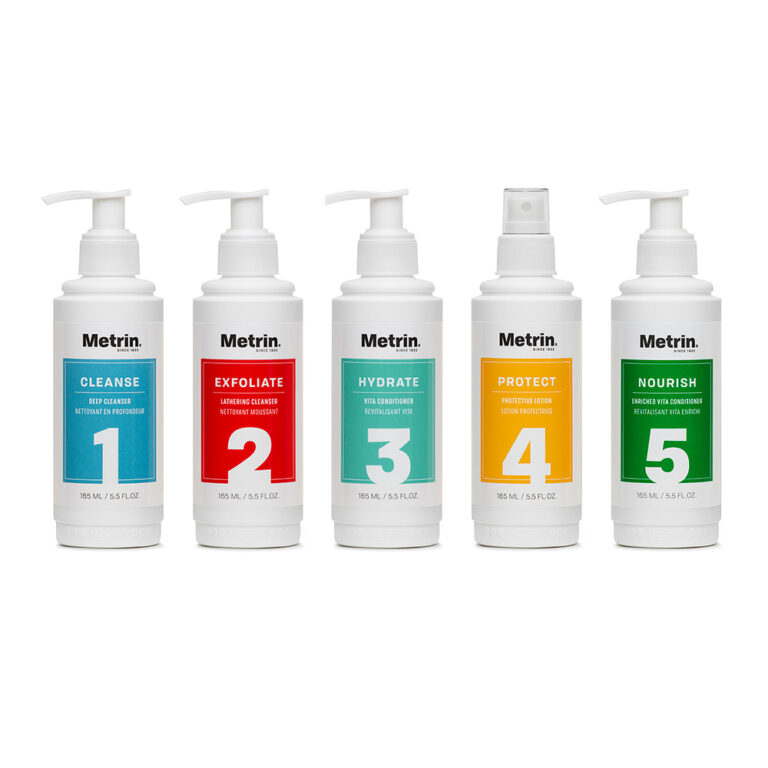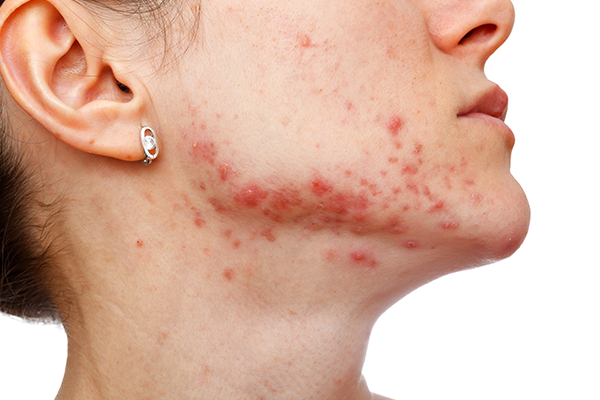Skin Care Allergies and Contact Dermatitis
One of the biggest concerns surrounding beauty products, especially those who suffer from sensitive skin, are skin care allergies and irritation to certain products and their ingredients.
With any allergic or inflammatory response, it’s usually caused by ingredients within products that are left on the skin.
There are two types of skin inflammation known contact dermatitis: irritant contact dermatitis (exposure to irritants) and allergic contact dermatitis (exposure to allergens).
Allergic skin reactions involve the immune system. Common symptoms often involve redness, itching, swelling, or hives on the body.
When skin’s natural system is compromised due to allergic, it can create an imbalance where acne, pimples, and blemishes may form.
Irritation or Allergy?
It can be difficult to differentiate an allergic reaction from the more common form of irritation, irritant contact dermatitis.
Sometimes, consumers think they are allergic or sensitive to a certain ingredient, but unless they have been tested specifically for the ingredient or had consistent allergic experience with a specific ingredient repeatedly, it is not easy to conclusively determine allergic sensitivity to a suspected ingredient.
An allergic response could be due to the dosage or the way a particular ingredient is formulated within the product that could be the causal issue or other factors (like mold or bacteria) could also play a role.
Sometimes, individuals tend to default and assume allergies as a cause. As a rule of thumb, when it burns, it’s usually a sign of irritation. Whereas, itching suggests an allergic reaction. Don’t mistake an allergic response for chronic conditions like eczema or rosacea.
The most obvious allergic reactions are to ingredients commonly found in foods. Many personal care products contain food ingredients and may illicit reactions with those who have sensitivities. As those with allergies know, looking at ingredient lists is required.
Contact Dermatitis
Irritant contact dermatitis is more common than its allergic form with an estimated 80% of contact dermatitis cases falling into the irritant category. This dermatitis causes the skin to turn red and rough and may look like a burn or cause small cuts (fissures) on the hands. It can be brought on by things like detergents, solvents, and various chemicals.
People who work in jobs that regularly expose their skin to heat and water, such as dishwashers and hairstylists, are more likely to develop irritant contact dermatitis. Exposure to the sun and UV rays can also cause certain irritants to become active.
Allergic contact dermatitis happens when your skin comes into contact with an allergen, or a substance that causes your immune system to react abnormally.
Some common allergens include metals, rubber, fabrics, fragrances, cosmetics, adhesives (glue), and some topical medicines. This type of dermatitis often manifests itself as an itchy, red rash, and can also be accompanied by blisters like in the case of poison ivy.

Getting Over It
The good thing about contact dermatitis is that unlike chronic conditions, this irritation will go away once the substance causing it is removed. Therefore, identifying and avoiding allergens and irritants is the most important thing you can do to stay symptom-free.
If you’re having difficulty pinpointing the cause of your dermatitis, consult your doctor. Also, if your work requires you to be exposed to certain irritants, be sure to wear protective clothing and do your best to keep them away from your skin.
Make sure to rinse your cleansers thoroughly from your face with enough water to gently remove all traces of any cleanser. This will help prevent your cleansers from irritating or drying our skin.
Finding Relief
Even after you’ve found out what is causing your dermatitis and removed it from your life, it may take several days for symptoms to improve and you’re likely to suffer some discomfort until the irritation goes away completely.
A cold compress and a nutrient-rich moisturizer will go a long way to help calm and soothe your symptoms. If your skin is very sore and inflamed, your doctor might also prescribe a topical corticosteroid. These are applied directly to the affected skin and work quickly to reduce inflammation. In severe cases, corticosteroid tablets can also be taken. However, corticosteroid can worsen other conditions like rosacea.
It is very important to calm skin afflicted by contact dermatitis to avoid scratching. Scratching the affected areas will delay healing, and can even lead to bleeding, scarring, or infection.
Allergens and Irritants
Dermatitis reactions can be very uncomfortable and painful. However, once you find out the cause of it, you can avoid it altogether. Rid yourself of any allergens and irritants then your skin should heal and revert to its previous state.
When your skin is red and itchy, it’s most likely some form of dermatitis. Eczema is one of five types of dermatitis, also known as atopic dermatitis, which is distinguished from other types of dermatitis by its hereditary, stress-related, and allergic response characteristics.
Despite being a very common form of skin irritation, eczema can be difficult to diagnose and its symptoms can be quite unpleasant.
The trickiest part of any reaction, especially to new products like skin care, is often determining the problem and source.
It’s important to know what you’re putting into on onto your body. Be aware and proceed carefully, especially if you have a history of sensitive skin.
That’s why we at Metrin are completely transparent about all the ingredients in our products. We have nothing to hide. Our formula is time tested and true. But we understand that the odd time, someone may have an unforeseen reaction. It can be hard to invest money into a skin care product not knowing for certain if you are going to have a reaction or not. This is why we offer our 6 month money back guarantee. When you buy the Metrin Skincare System for Her or for Him for the first time, you have 6 months to decide if you like it, if it works for you, and see if you have any sort of reaction. If for any reason you are unsatisfied, you can return it and get your money back!







